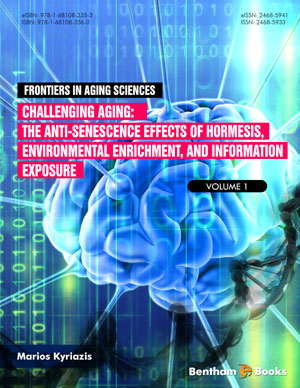Abstract
Emerging empirical and theoretical thinking about human ageing places considerable value upon the role of the environment as a major factor which can promote prolonged healthy longevity. Our contemporary, ‘information-rich’ environment is taken to mean not merely the actual physical surroundings of a person but it is also considered in a more abstract sense, to denote cultural, societal and technological influences. This modern environment is far from being static or stable. In fact, it is continually changing in an exponential manner, necessitating constant adaptive responses on behalf of our developmental and evolutionary mechanisms. In the previous chapters we have presented our views about these adaptive responses and mechanisms. Here, I will describe in some more detail these and related mechanisms of how a continual, balanced and meaningful exposure to a stimulating environment, including exposure to ‘information-that-requires-action’ (but NOT trivial information), has direct or indirect repercussions on several factors (mostly epigenetic) which may then act to prolong healthy longevity. Information gained from our environment acts as a hormetic stimulus which up-regulates biological responses and feedback loops, eventually leading to improved repair of age-related damage. The consequence of this up-regulated information-processing systems may influence resource allocation and redress the imbalance between somatic cell versus germ-line cell repairs. This can eventually have evolutionary consequences resulting in the drastic reduction of agerelated disease and degeneration.
Keywords: Ambient intelligence, Cognition, Complexity, Germ line repair, Human evolution, Information, Phase transition, Physical exercise, Smart cities, Techno-culture.






















